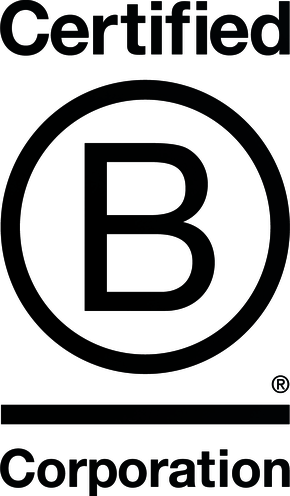In the present age of digital marketing and the recent upsurge of content marketing initiatives, conversations are swirling with the phrase, “quality content.” Especially in the fluctuating world of SEO, many members of the SEO community have raised content marketing up as their Holy Grail to heal wounds inflicted by algorithm updates and cursed guest posting strategies (watch for a POV on these recent changes from our Director of Earned Media, Ramsay Crooks).
It’s become abundantly clear that creating content is important, and that your content should be of high quality. The problem is that achieving “quality content” is not as easy to produce as the two-word phrase might imply. It takes a lot more than just knowing the quality is important to pull it off, but the directive to “create quality content” is often so simply stated in the face of such a complex task that it may as well read on a bumper sticker alongside “save the whales” and “stop the war.”
So Where Does “Quality” Come From?
“Quality content” is usually identified retro-actively, and content pieces are only defined as such once they’ve already gone live, generated a pile of links, and the risk of failure is behind us. It’s a lot easier to recognize quality content in the rearview than to get out ahead of it, but how do you anticipate what content will be effective and what won’t?
We definitely can’t write a surefire formula for creating content that consistently makes a splash. What we can do is break down some of the variables that commonly align to make something worth reading, watching, hearing, and, most importantly, sharing, in order to pin down the “quality” portion of the ubiquitous phrase, “quality content.”
5 STRATEGIES TO MAKE YOUR CONTENT “QUALITY” CONTENT
1.) Define your audience.
Part of the reason content quality is so hard to define is that quality is subjective to whoever is consuming it. However, you can define who those people are for you, AKA your audience. Determine a relatively specific personality set, not a one-size-fits none combination of age + gender + race. Know your audience, know your industry’s audience, and know a lot more than the interests immediately surrounding your product or service. What do people do once they leave your store, put down your product, or leave the restaurant? What do they do on weekends? Get to know what Ian Lurie calls “Random Affinities.” Many businesses skip right to content ideation and production without ever defining who is meant to think their content is so great. A clear definition of your audience will get you that much closer to anticipating quality and will allow you to broaden content possibilities beyond your products and services while still holding the interest of your customers.
2.) Serve a purpose.
What is your content meant to do? You should be able to answer this specifically, without deferring to generalities like “provide more content for our users” or “target keywords for search rankings.” We’re talking about purpose from your audience’s perspective. How are you helping them? The answer can be anything from education on a specific topic, guidance in a task or process, or just the goal of making someone laugh.
This is where your defined audience should come in to pre-qualify content for value and purpose. What do your customers have questions about? What do they have opinions about? How do they entertain themselves? These are questions you can pose to yourself, employees, and your customers to ensure your content takes aim at a specific content goal that serves your audience.
3.) Know what you’re talking about.
This seems obvious, but a lot of content on the web still seems to read “create quality content” to mean “just get 500 words on a page and call it good.” The level of quality needed to make an impact requires research, experience, and knowing the topic well enough to actually offer your own informed opinion or spin.
Don’t limit your research to the web. Leverage customers, employees, and other people who can offer unique opinions, then integrate your fact checking. Quality content is usually comprehensive too. Make your content robust enough that it spans your entire topic, recognizes all angles and opinions, and even anticipates reactionary questions your audience might have.
4.) Do something new.
Something that has been done before (the same way as before) typically has less value and gets less attention than something that breaks new ground. Especially when it comes to shareability, the element of novelty makes a big impact on the effect of your content. You don’t have to revolutionize your industry, but you should be saying or showing something that isn’t already out there. Being ready to comment on the news as it applies to your industry and audience is a great way to keep content fresh.
That’s not to say a fast follower approach isn’t worthwhile. Content trends like memes or pop culture crazes create waves that can be ridden for several months if you’re willing to join in (see Harlem Shake). If your audience is engaging with a particular trend and the content is appropriate to your business, that’s a good sign you can create some quality content.
5.) Nail the deployment.
Superficial, yes, but quality content has to look good and the medium by which content is delivered is just as important to quality as the message itself. No matter how new an idea may be or insightful the message, a deployment that doesn’t look good, sound good, or that makes content hard to access can sink the whole thing. The web offers a myriad of deployment options to choose from, so it can be difficult to choose the right one. A general rule for deployment is to make it as easy as possible for the audience (NOT for you) to access and absorb your content.
Your deployment decision should take into account both where your audience prefers to consume content and the medium that can best serve the nature of your content topic. Is your content better shown than read? Then a video or image-rich article may be the right choice. Maybe you’ve developed a series of quick tips that can be delivered in 140 characters or less, making a social platform more appropriate. Text-rich articles should use typography that makes your main points clear and breaks small condensed blocks of text into smaller, more digestible sections.
Hopefully, this has helped demystify the “quality” in quality content and give you some ideas to better plan for content that belongs in that camp. Above all else, quality is defined by the strength of the effect it has on its audience. While “quality content” may be referred to with one umbrella term, it’s vital to understand that “quality” is just a generic placeholder for the many different and variable elements needed to pique human interest and make a lasting impact.




